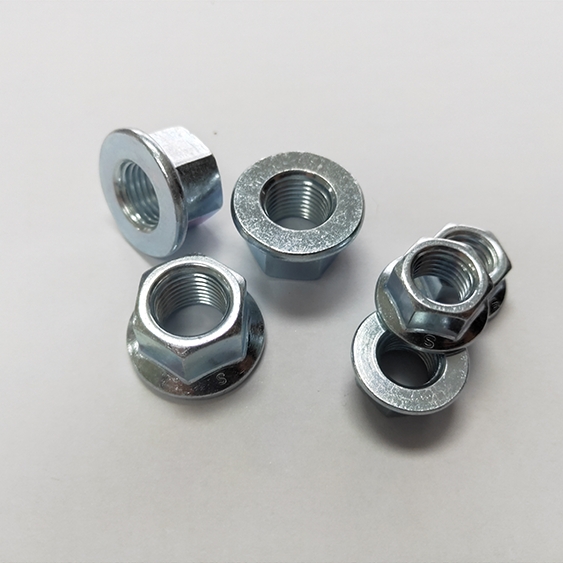How to Use a Flange Nut
2024-05-20
A flange nut is a type of fastener that is characterized by a wide flange at one end, which acts like an integrated washer. This flange helps to distribute the load of the nut over a larger surface area, preventing damage to the material being fastened and reducing the risk of the nut loosening. Here are the key features, uses, and benefits of flange nuts:
Key Features:
1. Integrated Washer: The flange is built into the nut, eliminating the need for a separate washer. This provides a larger bearing surface.
2. Variety of Designs: Flange nuts can come in different designs, including serrated and non-serrated.
- Serrated Flange Nuts: These have serrations on the flange that bite into the material, providing a locking action that prevents the nut from loosening under vibration.
- Non-serrated Flange Nuts: These have a smooth flange and are used where the material surface must not be damaged.
3. Materials and Finishes: Flange nuts are made from various materials such as steel, stainless steel, and brass. They can have different finishes like zinc plating, black oxide, and others for corrosion resistance.
Uses:
- Automotive Industry: Flange nuts are extensively used in the automotive industry for securing components like frames, engines, and suspensions, where a wide bearing surface is beneficial.
- Machinery and Equipment: Used in various machinery and equipment assemblies to ensure a secure and stable fastening.
- Construction: Commonly used in construction applications for fastening structural elements.
- Household Applications: Flange nuts can also be found in furniture assembly, home repairs, and DIY projects.
Benefits:
1. Increased Load Distribution: The flange spreads the load over a larger area, reducing the risk of damage to the fastened material and ensuring a more secure hold.
2. Vibration Resistance: Serrated flange nuts are particularly useful in applications subject to vibration, as the serrations help prevent loosening.
3. Ease of Use: With the integrated washer, assembly is faster and more convenient, as there is no need to handle a separate washer.
4. Improved Stability: The larger contact area provides improved stability for the fastened parts, reducing the likelihood of loosening or deformation.
How to Use a Flange Nut:
1. Select the Appropriate Nut: Choose a flange nut that matches the bolt size and material specifications for your project.
2. Insert the Bolt: Place the bolt through the components you are fastening.
3. Thread the Nut: Screw the flange nut onto the bolt. If using a serrated flange nut, ensure the serrations face the material to provide the locking action.
4. Tighten: Use a wrench or socket to tighten the nut until it is snug. Be cautious not to overtighten, especially with non-serrated nuts, to avoid damaging the material.
Conclusion:
Flange nuts are versatile and valuable fasteners that provide enhanced load distribution and resistance to loosening. They are widely used across various industries due to their practical benefits and ease of use. When selecting a flange nut, consider the specific requirements of your application to ensure optimal performance.



